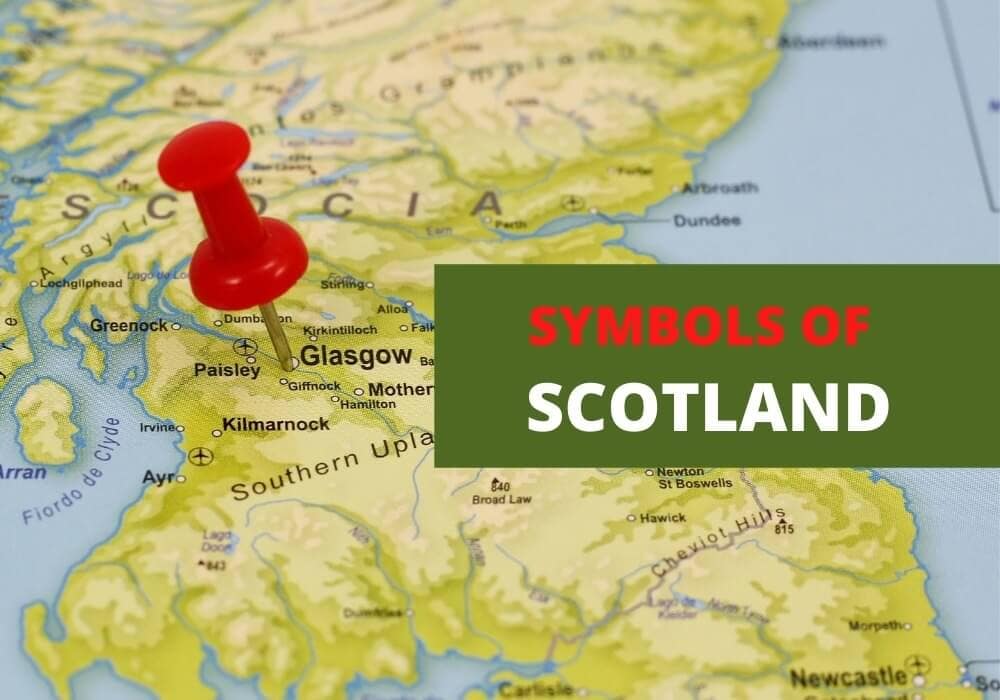
Table of Contents
Scotland has a long, rich and varied history, which is reflected in their unique national symbols. Most of these symbols are not officially recognized as national symbols, but are instead cultural icons, ranging from food to music, clothing and ancient thrones. Here’s a look at the symbols Scotland and what they represent.
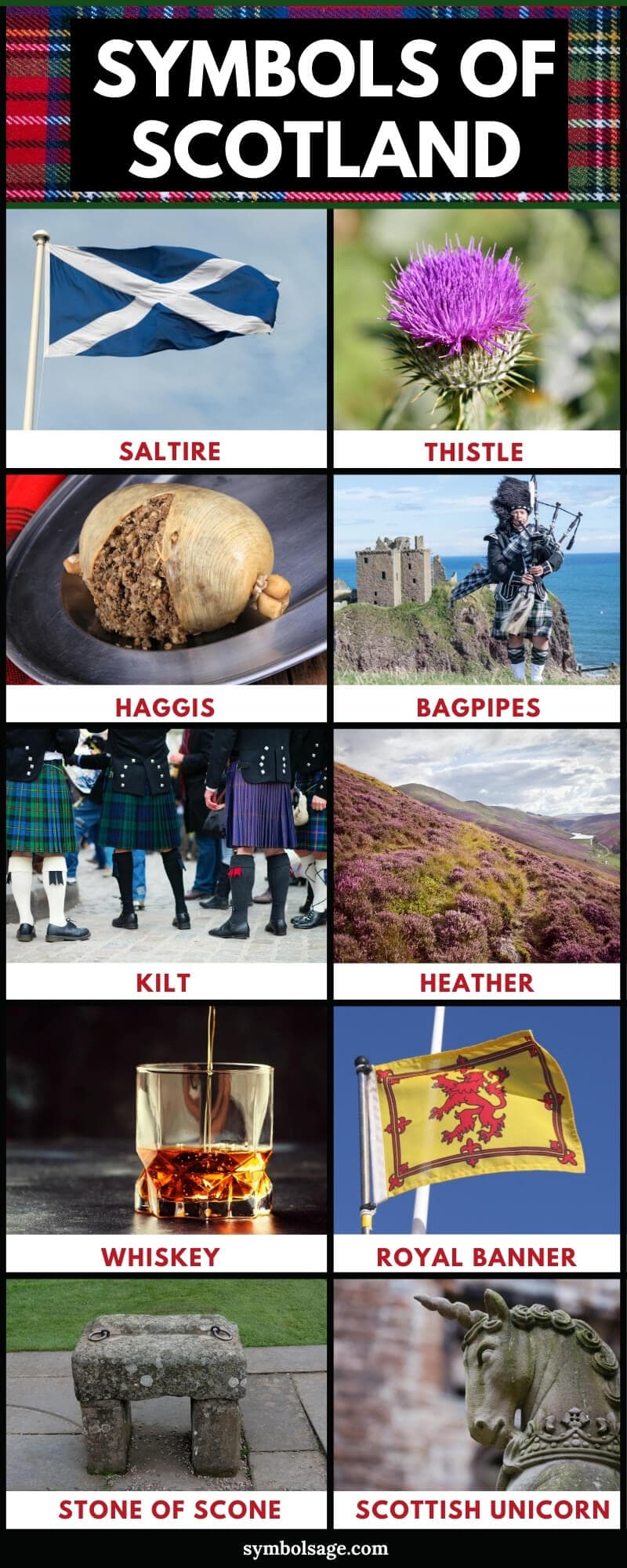
- National Day: 30th of November – St. Andrew’s Day
- National Anthem: ‘Flower of Scotland’ – the most notable from a number of anthems
- National Currency: Pound sterling
- National Colors: Blue and white/ yellow and red
- National Tree: Scots Pine
- National Flower: Thistle
- National Animal: Unicorn
- National Bird: Golden Eagle
- National Dish: Haggis
- National Sweet: Macaroons
- National Poet: Robert Burns
Scotland has a long, rich and varied history, which is reflected in their unique national symbols. Most of these symbols aren’t officially recognized as national symbols, but are instead cultural icons, ranging from food to music, clothing and ancient thrones.
Here’s a look at some popular symbols Scotland and what they represent.

- National Day: 30th of November – St. Andrew’s Day
- National Anthem: ‘Flower of Scotland’ – the most notable from a number of anthems
- National Currency: Pound sterling
- National Colors: Blue and white/ yellow and red
- National Tree: Scots Pine
- National Flower: Thistle
- National Animal: Unicorn
- National Bird: Golden Eagle
- National Dish: Haggis
- National Sweet: Macaroons
- National Poet: Robert Burns
The Saltire
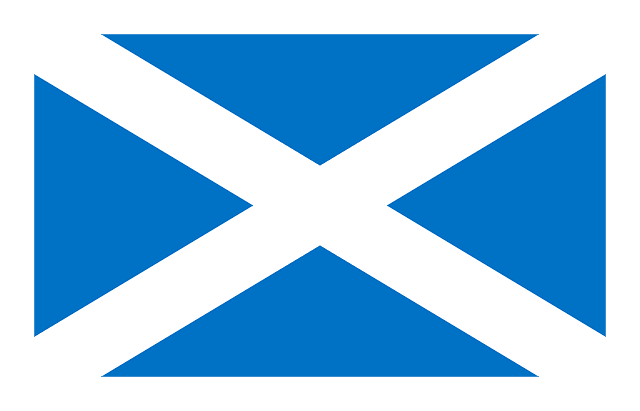
The Saltire, Scotland’s national flag, features a white cross on a blue background, also known as the St. Andrew’s Cross, after the shape of the cross on which St. Andrew was crucified. It dates back to the 12th century and is among the world’s oldest flags.
The legend behind it involves King Angus and his Scots facing the Angles in battle. Surrounded and desperate, King Angus prayed for help. That night, St. Andrew supposedly appeared in a dream, promising victory.
The next morning, a white saltire against the blue sky appeared. This sight encouraged the Scots and unnerved the Angles, leading to a Scottish victory. Since then, the Saltire has been Scotland’s flag.
The Thistle
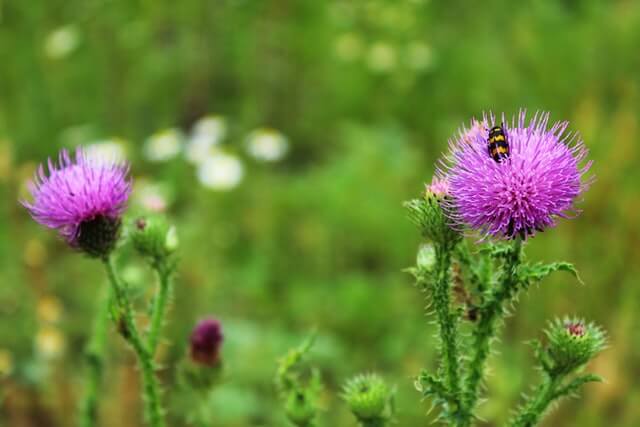
The thistle, a distinctive purple flower commonly found in the Scottish Highlands, is Scotland’s national flower. The exact reason for its selection remains a mystery.
Scottish legend says the thistle played a key role in a historic event. Supposedly, Norse invaders were about to attack sleeping Scottish warriors when one invader stepped on a thistle. His loud cry from the pain alerted the Scots, who then defeated the Norse. Following this victory, the Scots adopted the thistle as their national flower.
The Scottish Thistle also features prominently in Scottish heraldry. The Most Noble Order of the Thistle is a prestigious honor, awarded for outstanding service to Scotland and the UK, further cementing the thistle’s significance in Scottish culture.
Scottish Unicorn

The unicorn, a legendary creature, became Scotland’s national animal in the late 1300s under King Robert. It’s been associated with Scotland for centuries, symbolizing innocence, purity, power, and masculinity.
In mythology, the unicorn, considered the mightiest of all creatures, was wild and untamed. Legends say only a virgin maiden could humble it. Its horn was believed to have the power to purify poisoned water, highlighting its healing abilities.
You can see unicorns all over the towns and cities of Scotland. They often top ‘mercat crosses’ (market crosses) in towns and cities. At Stirling Castle and in Dundee, the HMS Unicorn, one of the oldest warships, features a unicorn as its figurehead.
The Royal Banner of Scotland (Lion Rampant)
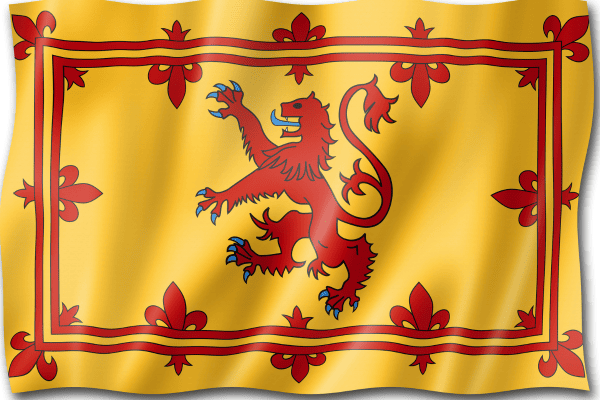
The Lion Rampant, also known as the Banner of the King of Scots, has been a royal symbol since Alexander II’s time in 1222. Often mistaken for Scotland’s national flag, it’s actually the personal banner of the Scottish monarch, now Queen Elizabeth II.
The banner features a yellow background with a red lion standing on its hind legs, surrounded by a red double border. It symbolizes Scotland’s history of national pride and valor, often seen at Scottish rugby and football games.
The Lion Rampant is part of the royal arms and banners of Scottish and British monarchs, representing the Kingdom of Scotland. Nowadays, its use is restricted to royal residences and the Monarch’s representatives. It remains one of the most recognized symbols of the Kingdom of Scotland.
The Stone of Scone
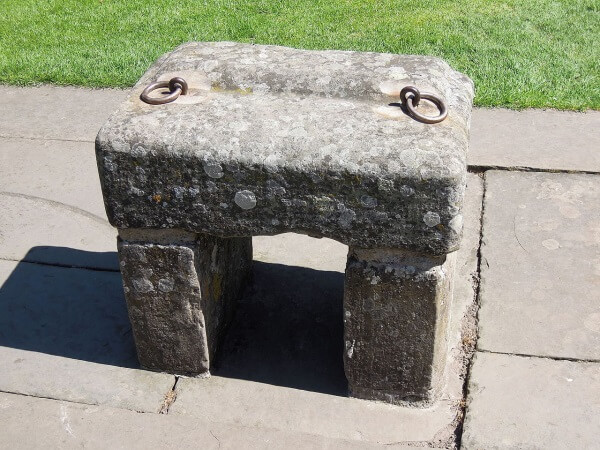
The Stone of Scone, also known as the Coronation Stone or Stone of Destiny, is a block of reddish sandstone used for Scottish monarchs’ inaugurations. Its early history is a bit of a mystery.
In 1296, English King Edward I took the stone and incorporated it into a throne at Westminster Abbey in London, using it for English coronation ceremonies. Fast forward to the mid-20th century, four Scottish students famously swiped it from Westminster Abbey.
It went missing for about 90 days before turning up at Arbroath Abbey, Scotland, 500 miles from Westminster. In the late 20th century Scotland officially got it back.
Now, the Stone of Scone sits in the Crown Room, drawing millions of visitors each year. It’s a protected piece of history and only leaves Scotland for a coronation at Westminster Abbey.
Whiskey
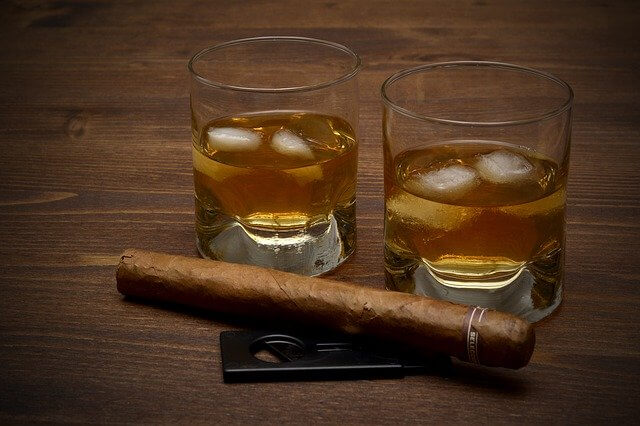
Scotland, known for its whiskey, has been making this famous drink for centuries. The story goes that whiskey-making started in Scotland when European monasteries spread winemaking techniques.
Lacking grapes, monks used grain mash instead, creating an early version of whiskey. Over time, the process evolved, and now Scotland produces various types like malt, grain, and blended whiskey, each with its unique creation method.
Today, well-known blended whiskeys like Johnnie Walker, Dewars, and Bells are not just big in Scotland but all over the world.
Heather
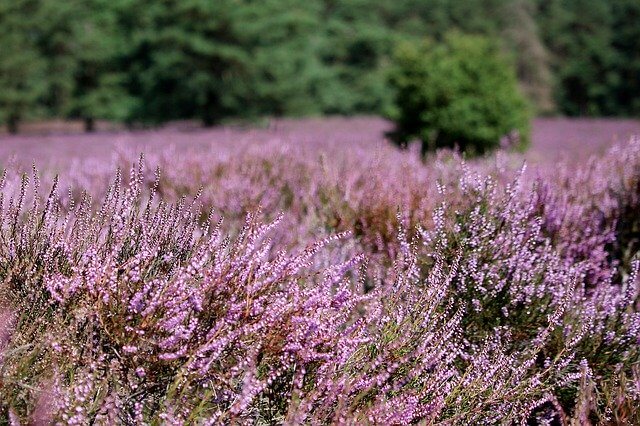
Heather, or Calluna vulgaris, is a small perennial shrub found all over Europe, especially on Scotland’s hills. Scottish history is full of battles for power, and there’s a tradition of soldiers wearing heather as a protective charm.
The Scots favored white heather for protection, avoiding red or pink heather, which was thought to be unlucky and invite violence. They believed white heather wouldn’t grow where blood had been shed and that it appeared where fairies had been, as per Scottish folklore.
Today, heather is an iconic, though unofficial, symbol of Scotland. Many still believe that wearing a sprig of heather can bring good luck.
The Kilt
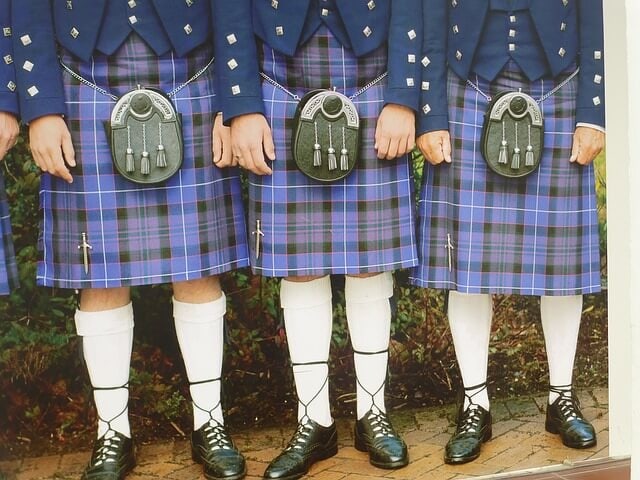
The kilt, a key part of traditional Scottish dress, is a knee-length garment with a unique, cross-checked pattern called ‘tartan’. It’s made from woven cloth and features permanent pleats, except at the ends. Men wrap it around their waist, with the ends overlapping in the front.
Developed in the 17th century, both the kilt and its accompanying plaid are unique in the British Isles, worn not just for special occasions but also in everyday life. Scottish soldiers even wore kilts in battle up until World War II.
Today, Scots wear kilts as a proud symbol of their Celtic heritage and to celebrate their culture.
Haggis
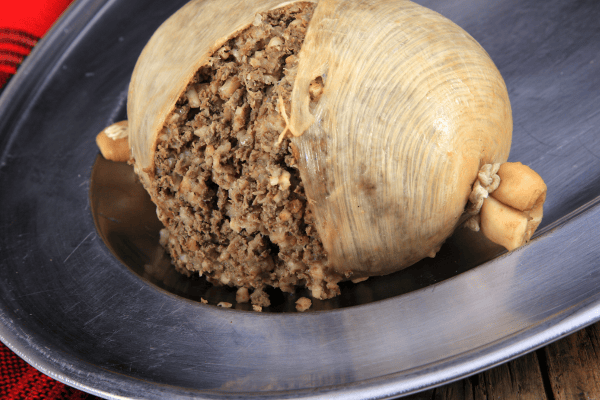
Haggis is Scotland’s go-to dish, a tasty pudding made from sheep’s organ meat like heart, liver, and lungs, mixed with onion, suet, oatmeal, spices, and salt, all cooked in stock. Originally, they’d cook it in a sheep’s stomach, but now they mostly use artificial casings.
Rooted in Scotland, haggis stands out even though other countries have similar dishes. By 1826, it was so key to Scottish culture that it became the national dish. It’s not just about food; it’s a big part of Scotland’s heritage.
In Scotland, haggis is the star of Burns Night on January 25th, celebrating the national poet Robert Burns. People usually eat it with ‘neeps and tatties’ (turnips and potatoes). They often kick off the meal with a reading of Burns’s “Address to a Haggis,” showing how much haggis means to Scottish culture.
Scottish Bagpipes
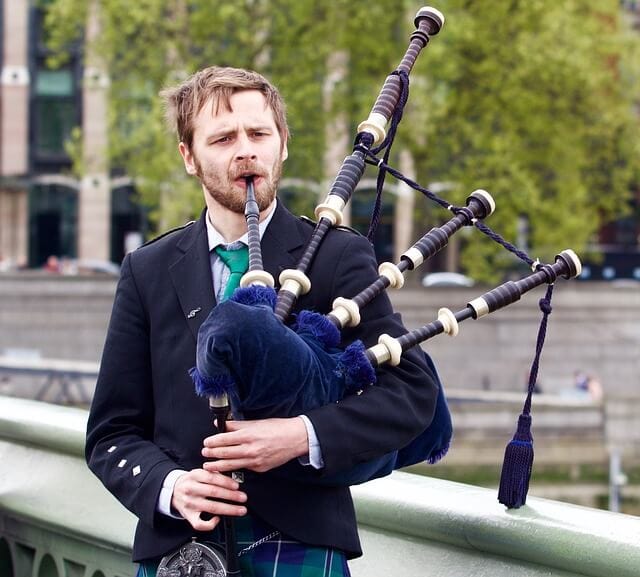
The Bagpipe, especially the Great Highland bagpipe, is a key Scottish instrument and a symbol of Scotland. It’s been around since around 1400, playing a big role in parades, the British military, and pipe bands globally.
Originally, bagpipes were made from woods like laburnum, boxwood, and holly. Later, more exotic woods like ebony, cocuswood, and African blackwood became popular, especially in the 18th and 19th centuries.
Bagpipes have a strong connection to warfare, often used on battlefields. This link gives them an association with courage, heroism, and strength. In Scotland and beyond, they’re seen as symbols of Scottish bravery and spirit. Bagpipes also stand out as key icons of Scottish heritage and culture.
Wrapping Up
The symbols of Scotland are a testament to the culture and history of the Scottish people, and the beautiful landscape that is Scotland. While not an exhaustive list, the above symbols are the most popular and often the most recognizable of all the Scottish symbols.








